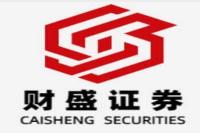A股市场回购增持潮:政策利好下的信心重建
元描述: A股市场回购增持潮席卷而来,政策红利、银行信贷支持,上市公司及大股东纷纷行动,增强投资者信心,本文深入解读这一现象背后的驱动因素、潜在风险及未来走势。关键词:A股,回购,增持,政策,银行贷款,信心,市场
Whoa! Hold onto your hats, folks! The A-share market is experiencing a massive wave of stock buybacks and increased holdings. It's a whirlwind of activity, and understanding it is key to navigating the current market landscape. This isn't just some minor ripple; we're talking a full-blown tsunami of corporate confidence, driven by a confluence of factors that are reshaping the investment scene. From government initiatives injecting billions into strategic projects to the readily available bank loans fueling buyback programs, this surge is a significant development that demands careful examination. Let's dive deep into the heart of this phenomenon, exploring the rationale behind it, the potential pitfalls, and what this might mean for the future. Prepare for an in-depth analysis, seasoned with real-world insights and expert opinions, that'll leave you feeling armed and ready. Buckle up—this is going to be a wild ride!
A股回购增持:政策红利下的市场信心修复
The recent surge in A-share buybacks and increased holdings isn't a spontaneous combustion; it's a carefully orchestrated response to a series of supportive government policies. The Chinese government's commitment to bolstering the economy is clearly evident in the massive injection of capital into key infrastructure projects and strategic initiatives. The allocation of 7000 billion yuan from the central budget for investment, coupled with an additional 7000 billion yuan from ultra-long-term special government bonds earmarked for "two-heavy" construction (presumably referring to major infrastructure and key strategic areas), demonstrates a powerful commitment to stimulating growth. This massive infusion of capital directly impacts investor sentiment, creating a more positive outlook for the market.
Furthermore, the introduction of specialized loans designed specifically for stock buybacks and increased holdings has acted as a powerful catalyst. This initiative provides listed companies and major shareholders with readily accessible funding, significantly lowering the financial hurdle to these actions. This clever strategy not only encourages companies to invest in themselves but also signals a strong vote of confidence from the government, further fueling investor optimism. Think of it as a triple-whammy: government investment, loan programs, and a strong confidence boost for investors.
This isn't just theory; we've seen several prominent companies leverage these loans. For example, 金宏气体 (Jin Hong Gas) secured a loan from the Industrial and Commercial Bank of China (ICBC) to fund its share repurchase program, while 利群股份 (Liqun Shares) followed suit, using a loan to boost its buyback efforts. These examples illustrate the tangible impact of the new loan scheme, demonstrating its effectiveness in facilitating corporate actions that directly benefit shareholders.
Moreover, the participation of major shareholders in these initiatives adds another layer of significance. The substantial increase in holdings from players like 贝莱德 (BlackRock) in companies such as 拼多多 (Pinduoduo) highlights the heightened confidence in the market. This is a powerful signal that even international investors are buying into the narrative.
银行贷款支持下的回购增持热潮
The availability of dedicated bank loans for share repurchases and increased holdings has proven to be a game-changer in the A-share market. Let's face it, even the most optimistic companies need a little financial elbow room to execute major buyback programs. These specialized loans, offered by major institutions like ICBC and Bank of China, have significantly lowered the barrier to entry, enabling companies of varying sizes and across different sectors to participate in this bullish trend.
The impact is multifaceted. Firstly, it provides a direct injection of liquidity, helping companies to shore up their balance sheets and demonstrate their commitment to shareholder value. Secondly, it sends a powerful message to the market, suggesting that the company leadership believes its stock is undervalued and presents an attractive investment opportunity. Lastly, it's a stroke of genius from a policy perspective—it leverages the power of the banking system to stimulate market activity directly.
Table 1: Examples of Companies Utilizing Bank Loans for Buybacks and Increased Holdings:
| Company Name | Industry | Loan Amount (approx.) | Purpose |
|-----------------------|---------------------------|-----------------------|-----------------------------|
| 金宏气体 (Jin Hong Gas) | Gas and Chemical | ¥48 million | Share Repurchase |
| 利群股份 (Liqun Shares) | Retail | ¥180 million | Share Repurchase |
| 安孚科技 (Anfu Technology) | Technology | ¥30-50 million | Shareholder Increased Holdings |
| 海亮股份 (Hailing Shares) | Materials | ¥200-300 million | Shareholder Increased Holdings |
| 外高桥 (Waigaoqiao) | Logistics & Real Estate | Up to ¥480 million | Shareholder Increased Holdings |
This isn't simply a short-term phenomenon; the sustained commitment from banks indicates a long-term strategy to support the market's recovery and stability. It's a smart move that creates a win-win situation for everyone involved.
中概股表现与市场情绪
The performance of Chinese companies listed on US exchanges (often referred to as "Chinese ADRs") also deserves attention in this context. While the overall US market experienced fluctuations, many Chinese ADRs saw significant gains, mirroring the positive sentiment fueled by the aforementioned government initiatives and the buyback frenzy in the A-share market. Companies like 拼多多 (Pinduoduo) and 理想汽车 (Li Auto) showcased impressive growth, highlighting the resilience and potential of Chinese companies in the global market. This positive performance, in turn, further boosts investor confidence in the overall Chinese market, creating a virtuous cycle of growth.
However, it's important to acknowledge that this is a complex picture. Geopolitical factors and global economic uncertainty still pose challenges. Therefore, while the current trend is undeniably positive, it's crucial to maintain a balanced perspective and factor in the broader economic landscape.
潜在风险与未来展望
While the current surge in buybacks and increased holdings paints a rosy picture, it's essential to acknowledge potential risks. The reliance on bank loans to fuel this activity introduces leverage into the equation, potentially increasing vulnerability in the event of a market downturn. Furthermore, the sustainability of this trend depends on the continued effectiveness of government policies and the overall health of the global economy. A sudden shift in either could potentially dampen the enthusiasm.
Despite these potential risks, the long-term outlook remains relatively positive. The government's clear commitment to economic growth, coupled with the proactive measures taken to support the market, suggests a strong foundation for sustained recovery. The increased liquidity, driven by bank loans and government investment, is likely to continue playing a crucial role in fostering market confidence. The key will be ensuring that this positive momentum is translated into sustainable, long-term growth.
常见问题解答 (FAQ)
Q1: Are these buybacks and increased holdings a sign of a healthy market?
A1: It's a complex question. While it indicates increased confidence from both companies and the government, the reliance on bank loans introduces leverage. A truly healthy market exhibits organic growth and confidence without excessive reliance on debt.
Q2: What are the potential risks associated with this trend?
A2: The main risk is the increased leverage due to bank loans. A market downturn could significantly impact companies that have heavily leveraged their balance sheets for buybacks. Geopolitical factors and global economic uncertainty also pose a threat.
Q3: How long is this trend likely to last?
A3: The duration is uncertain. It depends on the continued effectiveness of government policies, global economic conditions, and overall market sentiment. However, the government's commitment suggests a prolonged period of support.
Q4: Should I invest in A-shares based on this trend?
A4: Investment decisions should be based on thorough due diligence and a diversified portfolio. This trend is a positive sign, but doesn't guarantee future market performance. Consult a financial advisor before making any investment choices.
Q5: What role does government policy play in this trend?
A5: Government policy has been the primary driver. The large-scale investment programs and the introduction of specialized loans for buybacks and increased holdings are the key catalysts.
Q6: What are the implications for international investors?
A6: The increased confidence and market activity present opportunities, but also require caution. The performance of Chinese ADRs reflects the overall positive sentiment, but geopolitical factors should be carefully considered.
结论
The current wave of buybacks and increased holdings in the A-share market represents a significant development, driven by a combination of supportive government policies and readily available financing. While offering a positive outlook, it's crucial to stay aware of potential risks and maintain a balanced perspective. The long-term implications remain promising, contingent upon the continued success of government initiatives and the global economic environment. This exciting chapter in the A-share market's story warrants continued observation and analysis.



